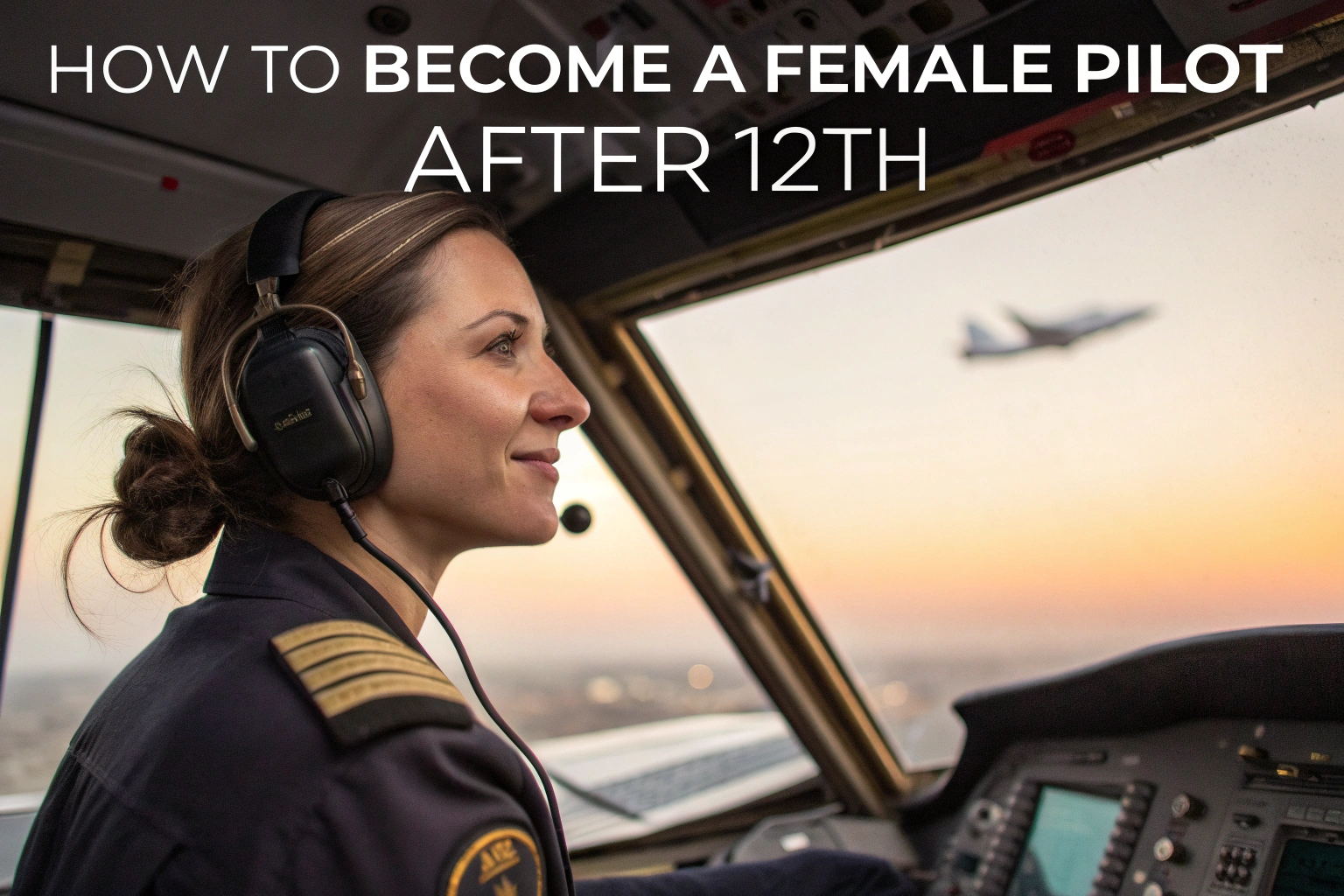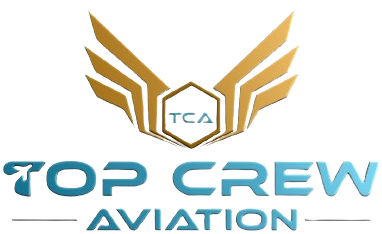
Introduction
Flying an aircraft has always been regarded as one of the most prestigious, adventurous, and rewarding career choices. In the past, aviation was often seen as a male-dominated profession, but today the skies are witnessing a remarkable change. More and more young women are breaking barriers, shattering stereotypes, and stepping into the cockpit with confidence and determination. India, in fact, has one of the highest percentages of women pilots in the world—a testament to the growing interest and opportunities available for aspiring female aviators.
If you have just completed your 12th grade and have a strong passion for flying, you might be asking yourself: “How to become a female pilot after 12th?” This question is not only common but also very relevant for ambitious young women who dream of commanding an aircraft, whether in commercial aviation, defense services, or private charter flying. Understanding the eligibility criteria, training process, costs, and the right institutes is the first step toward turning this dream into reality.
Why Choose a Career as a Female Pilot after 12th?
Growing Demand for Pilots
India is one of the fastest-growing aviation markets in the world. With more domestic and international airlines expanding their fleet, there is an ever-increasing demand for qualified pilots.
Women Breaking Barriers
India has the highest percentage of female pilots globally (15%), compared to just 5% worldwide. Airlines like Air India, IndiGo, and Vistara actively encourage women to join the cockpit.
Attractive Salary Packages
A Commercial Pilot in India can earn between ₹1.5 to ₹6 Lakhs per month, depending on experience and airline.
Prestige and Lifestyle
Pilots enjoy not just a high salary but also respect, international travel, and a glamorous lifestyle.
Eligibility Criteria: To Become a Female Pilot After 12th?
Before you enroll in a pilot training course in India, you must meet the basic eligibility requirements:
Educational Qualification:
1. 10+2 with Physics and Mathematics is mandatory.
2. If you didn’t study Physics/Maths in 12th, you can clear them later via NIOS.
Minimum Age Requirement:
1. You must be 17 years old to start pilot training.
Medical Fitness:
1. You need to clear a Class 2 Medical Examination, followed by a DGCA Class 1 Medical.
2. This ensures you’re physically and mentally fit to fly.
English Proficiency:
1. Aviation requires strong English communication skills, as all communication is in English.
Step-by-Step Guide: How to Become a Female Pilot After 12th in India
Here’s the complete process every aspiring female pilot must follow:
Step 1: Apply for DGCA Computer Number
1. This is the first official step to begin pilot training in India.
2. It’s like your permanent identification with the Directorate General of Civil Aviation (DGCA).
Step 2: Clear Medical Fitness Tests
1. First, you must pass the Class 2 Medical Examination.
2. Then, you need DGCA Class 1 Medical, which is mandatory before solo flying.
Step 3: Enroll in a Pilot Training Institute in India
1. Choose from the best pilot training institutes in India.
2. Consider factors like fees, duration, DGCA approval, and reputation.
Step 4: Complete Ground School Training
Subjects include:
– Air Navigation
– Aviation Meteorology
– Air Regulations
– Aircraft Technical General
This helps you build theoretical knowledge.
Step 5: Flying Training (Minimum 200 Hours)
1. You need at least 200 hours of flying experience to apply for a Commercial Pilot Licence (CPL).
Step 6: Clear DGCA Exams
Subjects: Navigation, Meteorology, Air Regulations, and Technical.
Conducted by DGCA multiple times a year.
Step 7: Apply for CPL
After completing training and exams, you can apply for your Commercial Pilot Licence.
Step 8: Get Type Rating Training (Optional but Required for Airlines)
Airlines require pilots to be trained on specific aircraft, such as the Airbus A320 or Boeing 737.
This additional training costs ₹15–25 Lakhs.
Duration: How Many Years Does It Take to Become a Female Pilot After 12th?
On average, it takes 2 to 3 years to complete pilot training in India.
– Ground Training: 6–8 months
– Flying Training: 12–18 months
– Exams & Licensing: 3–6 months
Total duration = 2–3 years (depending on weather, institute, and student performance).
Pilot Training Fees in India (2025)
One of the most asked questions: How much does it cost to become a pilot in India?
Here’s a breakdown:
1. Pilot training in India: ₹45–₹75 Lakhs
2. Commercial pilot course fees in India: ₹50–₹70 Lakhs
3. IndiGo Cadet Pilot Program fees: ₹75–₹85 Lakhs
4. Pilot course fees in the India government institutes: ₹20–₹40 Lakhs
💡 Tip: Scholarships for pilot training in India are available, especially for female candidates.
Pilot Course Duration and Fees in India
- Duration: 2–3 years
- Fees: ₹45–₹75 Lakhs
- Pilot course subjects include: Navigation, Meteorology, Aircraft Technical, and Air Regulations.
Top 10 Pilot Training Institutes in India with Fees
If you want to become a pilot, enrolling in a reputed DGCA-approved institute is essential.
👉 For a detailed list of the Top 10 Pilot Training Institutes in India with Fees, check out this complete guide.
Scholarships for Female Pilots in India
The biggest challenge for many students is the pilot course fees in India. But don’t worry—several scholarships and cadet programs help reduce costs.
Popular Options:
1. IndiGo Cadet Pilot Program (with financial assistance)
2. Government scholarships for women in aviation
3. Private NGOs supporting girls in STEM careers
4. Bank education loans with flexible repayment
Career Opportunities After Becoming a Pilot
After completing your commercial pilot course in India, you can choose from multiple career paths:
1. Commercial Airline Pilot – Flying for IndiGo, Air India, Vistara, or SpiceJet
2. Cargo Pilot – Operating cargo flights for logistics companies
3. Charter/Private Jet Pilot – Flying private jets for corporations or celebrities
4. Flight Instructor – Training new aviation students
5. Indian Air Force Pilot – By appearing for NDA/AFCAT exams
Challenges Female Pilots May Face
While opportunities are increasing, there are still some challenges:
1. High Cost of Pilot Training – Fees are between ₹45–₹85 Lakhs
2. Competition in Airlines – Thousands of students graduate every year
3. Work-Life Balance – Odd hours and long flights can be demanding
4. Gender Bias – Though reducing, some stereotypes still exist
Success Stories of Female Pilots in India
India is home to many inspiring female pilots:
1. Captain Zoya Agarwal – Air India pilot who commanded the world’s longest all-women crew flight.
2. Gunjan Saxena – IAF officer who served during the Kargil War.
3. Anny Divya – Youngest female commander of Boeing 777 at Air India.
These examples show that the sky is not the limit—it’s just the beginning!
👉 If you’d like to read more inspiring journeys, explore this article on 10 Indian Pilots Who Made It Big.
Conclusion
Becoming a female pilot in India after 12th is an exciting and rewarding career path. With India leading the world in women pilots, this is the best time to pursue your aviation dream.
To succeed, you need the right mix of eligibility, financial planning, and training from a reputed institute. Whether you aim to join an airline as a commercial pilot or serve in the Indian Air Force, opportunities are limitless.
So, if you’ve ever dreamed of flying, now is the time to take your first step. Research well, choose the right pilot training institute in India, and prepare to soar high above the clouds.
FAQs
Q1: How much money is required to become a pilot in India?
On average, ₹45–75 Lakhs, depending on the institute.
Q2: Can I become a pilot after 10th?
You can start ground studies after 10th, but you need 12th with Physics & Maths for CPL.
Q3: How many years does it take to become a pilot after 12th?
It takes 2–3 years for becoming a pilot.
Q4: What is the pilot course eligibility?
10+2 with Physics & Maths, minimum 17 years old, and Class 1 Medical fitness.
Q5: Are there scholarships for female pilots in India?
Yes, several airlines, government schemes, and NGOs provide assistance.
Frequently Asked Questions
No FAQs found.



